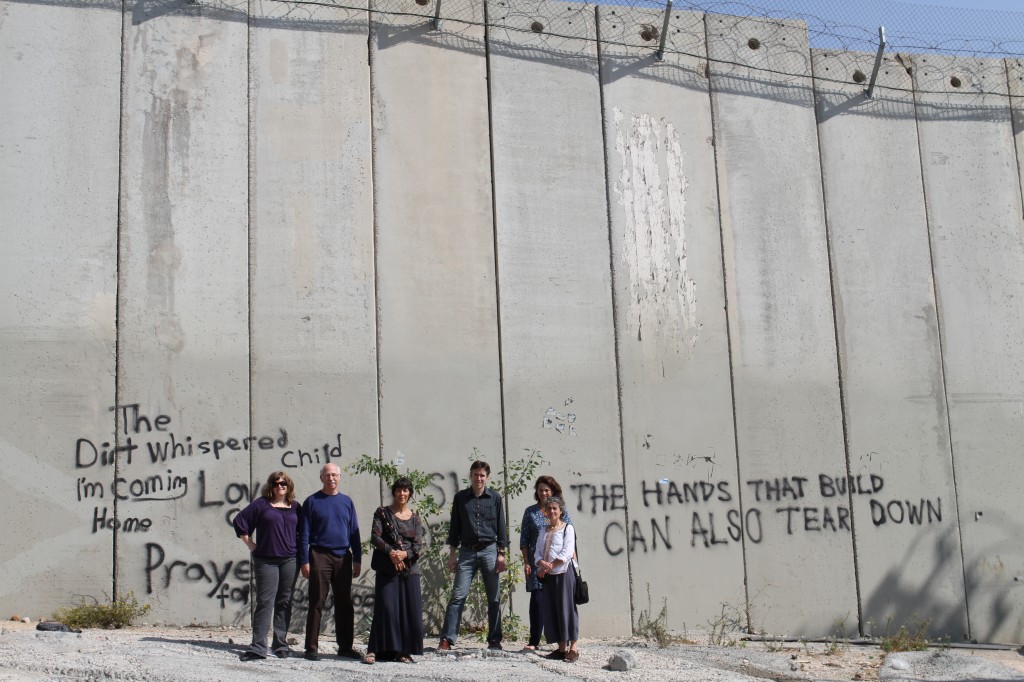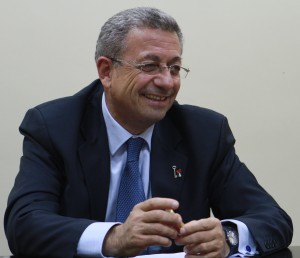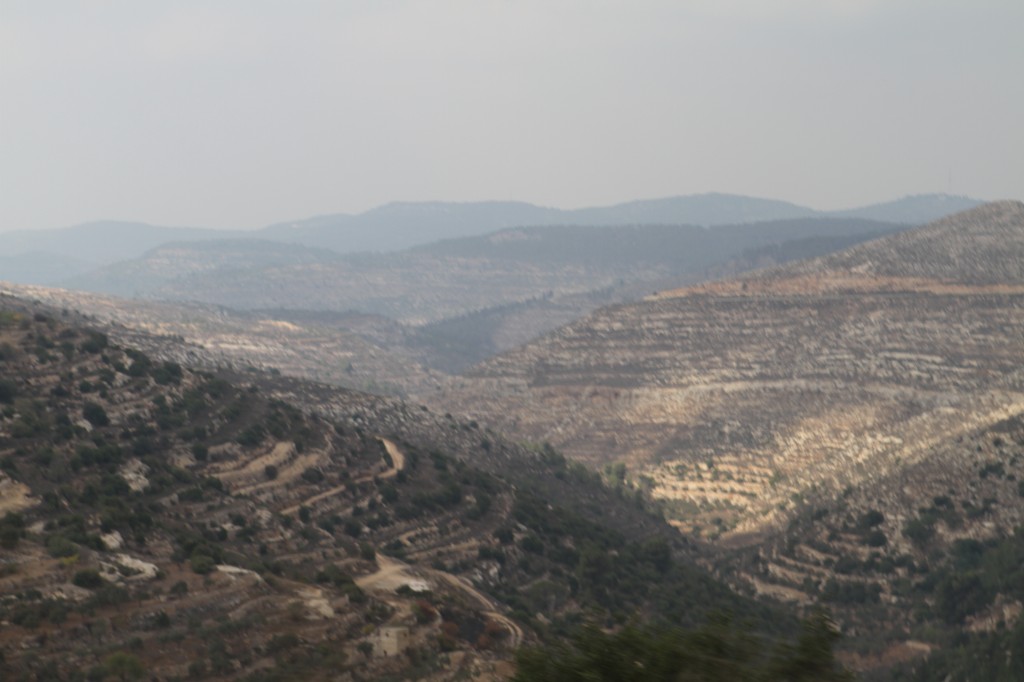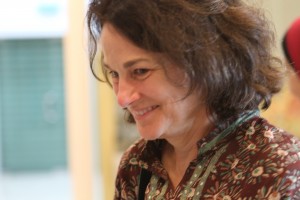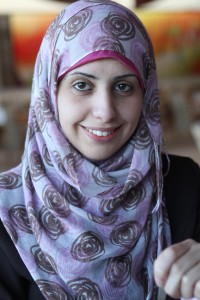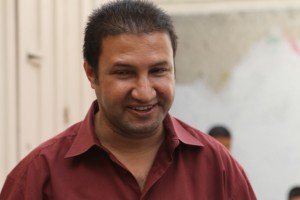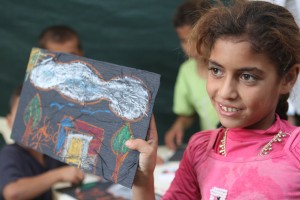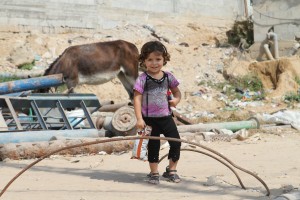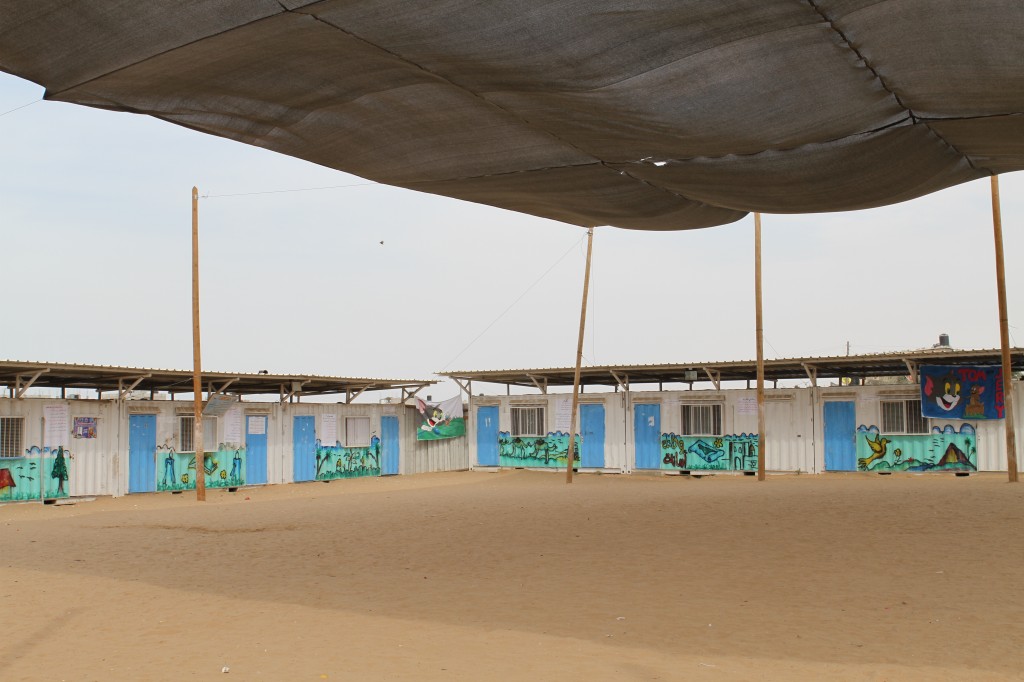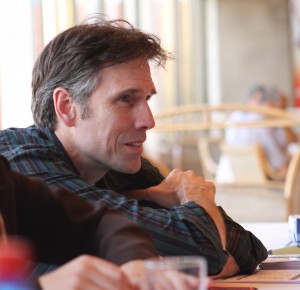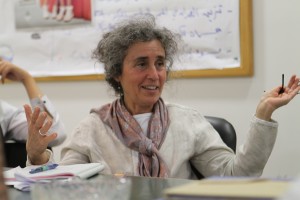BY MARK TRAHANT
(Mark Trahant is a writer, speaker and Twitter poet. He is a member of the Shoshone-Bannock Tribes and lives in Fort Hall, Idaho. Trahant’s recent book, “The Last Great Battle of the Indian Wars,” is the story of Sen. Henry Jackson and Forrest Gerard.)
A simple statement from the two co-chairs of the Joint Select Committee on Deficit Reduction. “After months of hard work and intense deliberations, we have come to the conclusion today that it will not be possible to make any bipartisan agreement available to the public before the committee’s deadline.”
And, they continued, “despite our inability to bridge the committee’s significant differences, we end this process united in our belief that the nation’s fiscal crisis must be addressed and that we cannot leave it for the next generation to solve. We remain hopeful that Congress can build on this committee’s work and can find a way to tackle this issue in a way that works for the American people and our economy.”
But let’s be clear about this statement, the committee, and Congress itself. This represents a failure to govern. There is a structural inability to make difficult choices about what the country needs to do to finance its operations. The so-called super-committee is no different than the country and its citizenry. We are divided, locked into a struggle with significant differences about what to do next.
Some of us believe that we should balance two competing ideas: We should invest in jobs. Now. Again. And keep doing that until everyone who wants a jobs has access to one. Then, and only then, the government should begin a long-term strategy of rethinking promises made through entitlement programs.
The other view says cut government now. Shrink government, period. Don’t raise a single dime in new taxes — and let the economy grow again (after it crashes).
Now we will read over the coming weeks and months about the tragedy of automatic budget cuts as the real numbers surface. Some will complain about how much smaller our military must become. Others will note the deep unfairness in cutting domestic programs that serve people who are at the lowest end of the economic spectrum. The president has already promised to veto any bills that try to get around the automatic budget cuts.
But the real problem, the much bigger issue, is that this exercise represents a failure to govern. Congress could not reach a decision last summer, so it passed on extraordinary powers to the so-called super-committee. Before that the administration passed on its authority to a bipartisan committee charged with coming up with a financial plan.
So failure becomes the norm in our political discourse, we are defined by our inability to forge consensus.
I live in rural Idaho and listen to local talk radio. The people who call the station cannot understand, let alone appreciate, any differences about how other citizens approach these difficult fiscal issues. It’s the same in the Blue Cities, only opposite. That divide makes it nearly impossible to acknowledge areas of common ground. This is not new in our history. Divides this great were present before the election of 1812 (some call the second revolution) before the civil war and before Prohibition was incorporated into the Constitution.
Take health care. If we really want to fix the deficit in a way that will last, we need to reduce the cost of health care. We cannot afford to spend $7,538 per person when the rest of the industrial world spends under $4,000. Or, looking at it another way, we cannot compete in a world economy where we spend16 percent of our Gross Domestic Product on health care when France pays 11.2 percent or Japan 8 percent.
We need to make health care sustainable. That’s how we fix our budget. If we do this one thing, our budget problems will shrink into a manageable form. But we cannot even agree on the baby step we took last year with the Affordable Care Act. Perhaps that should be the only issue we debate during the 2012 election because it’s the only way to really get the cost of government under control.
This just in from Intercontinental Cry, an all-volunteer online journal founded in 2004 and dedicated to providing reports, videos and action alerts on the most pressing Indigenous struggles.
November 19, 2011
The Government of Manipur is in the process of burning down hundreds of floating huts (Khangpokshang) belonging to the Meitei Peoples in the Loktak Wetlands of Central Manipur. The Government blames the Indigenous Peoples of polluting the Lake; however, the Meitei say that any pollution there is really from the Loktak Multipurpose Hydroelectric Project. Nearly 200 floating huts have already been burnt. The remaining 1,132 huts face a similar fate.
Cross-posted from climate-connections.org
The Government of Manipur, a provincial government of the Government of India has unleashed a reign of state terror by burning down floating huts (Khangpokshang), built over Phumdis (floating vegetation mass) belonging to the fishermen living in Loktak Wetlands in Central Manipur from November 15, 2011 and is still continuing. The deliberate arsoning process was carried out by personnel of the Loktak Development Authority and the Manipur Police forces in accordance with a government notification issued by Loktak Development Authority on 11 November 2011. Nearly 200 floating huts have already been burnt so far till 17 November and the remaining 1,132 floating huts are to meet similar fate. There are about 5,000 family members living in all these floating huts in localities like Khuman Yangbi, Nambul Machin and Karang Sabal within the Loktak Lake.
The burning down of the floating huts is in accordance with the provisions of the much controversial Loktak Lake (Protection) Act, 2006, in particular Article 19 and 20 of the Act, which divides the 236.21 sq km Loktak Lake into two zones – a core zone comprising 70.30 sq km, which is a ‘no development zone’, or ‘totally protected zone’, and a buffer zone of other areas of the lake excluding the core zone. A vital aspect of this division is the ban on building huts or houses on phumdis inside the lake, planting athaphum, or engaging in athaphum-fishing in the core area, which will adversely affect over 10,000 people living in phumdi huts, as well as others dependent on Loktak Lake.
The arsoning of nearly 200 floating huts has led to displacement of nearly 950 community members so far who has been living in these floating huts for generations. The number of affected community is still increasing as the arsoning spree is continuing. The affected family members including women, children and elderly are seeking refuge at Ningthoukhong Makha Leikai community hall in Bishenpur District, Manipur. The fishing gears and nets of the communities, the only survival means to catch fish from the Loktak wetlands were also burned and these has left the community in further dire situation and will impact on the communities to freely carry out daily chores of livelihood activities which they follow since time immemorial. Many of the children can no longer go to school. With the winter already setting in Manipur, the displaced villagers are facing much inconveniences.
Each household was offered 40,000 Indian Rupees (approx 900 USD) as compensation before burning down their huts. However, most of the villagers rejected this payment as the amount is too meager and cannot compensate their livelihood and survival means. And moreover, there is no process to rehabilitate the affected villagers and their right to free, prior and informed consent has not been sought. Rather, the arsoning of the huts is a forcible process with the Manipur police commandoes threatening and intimidating the affected villagers before burning their huts. And in many cases, the police also forced the displaced family members to burn their own huts.
The arsoning and destruction of floating huts and livelihood of the indigenous people dwelling in Loktak Lake constitute a serious violation of the “right to life”, “right to adequate housing” as guaranteed by the International Covenant on Civil and Political Rights and also the International Covenant on Economic, Social and Cultural Right. The failure to take the consent of the affected communities also constitute a serious forms of discrimination targetting the marginalized communities and also violated the UN Declaration on the Rights of Indigenous Peoples and the UN Convention on the Elimination of all forms of Racial Discrimination.
Affected peoples in several occasions had been raising vehement opposition to the introduction of the Act, which they fear would break the age-old bond between the lake and its people. Indigenous peoples depending on the Loktak Lake for survival continue to demand complete scrapping of the Loktak Protection Act, 2006.
DEMANDS
Urge upon the Government of India to:
Call for immediate suspension of burning of the remaining floating huts at Loktak lake
Allow and support the affected villagers to rebuild their floating huts in the phumdis for all those whose houses are being burnt and destroyed.
Adequate resettlement for affected fishermen near the lake with their free prior and informed consent so as to enable them to catch fishes and depend on the Loktak wetlands for their survival.
Adequate compensation for the loss of properties of affected villagers, such as fishing gears and equipments.
Revoke the Manipur Loktak Lake Protection Act, 2006 as this act has been formulated without the participation and consent of the affected communities and this act has failed to address the root cause of the persisting and increasing problems of Loktak Lake caused by the Ithai Barrage of the Loktak Multipurpose Hydroelectric Project.
Review Loktak Multipurpose Project and consider decommissioning of the Ithai Barrage in accordance with the recommendations of the World Commission on Dams
Recognize indigenous peoples’ community rights over their land and resources and their right to define their development priorities using their land and resources.
Implement indigenous peoples Right to Free Prior and Informed Consent before introducing any mega development policies and projects in Manipur in accordance with the United Nations Declaration on the Rights of Indigenous Peoples
Stop all forms of displacement of indigenous peoples in the name of protection of wetlands and thereby should not lead to extinguishment of their survival and livelihood.
State should stop militarization of indigenous peoples land and using the military and law enforcing agencies in the pretext of promoting development projects in their territories without their consent
PLEASE SEND YOUR LETTERS BY FAX OR EMAIL TO:
The Prime Minister of India,
South Block, Raisina Hill,
New Delhi,
India-110 101.
Telephone: 91-11-23012312.
Fax: 91-11-23019545 / 91-11-23016857.
Dr. P. Chidambaram
Home Minister
Griha Mantralaya
Room No. 104, North Block
Central Secretariat, New Delhi 110001
INDIA
Fax: +91 11 2301 5750, 2309 3750, 2309 2763
E-mail: hm@nic.in
Chairperson
National Human Rights Commission of India
Faridkot House, Copernicus Marg
New Delhi-110001 INDIA
Fax: +91 11 23340016
E-mail: chairnhrc@nic.in
Mr. Y Joykumar Singh
Director General of Police
PHQ Imphal Manipur
795001 Imphal, Manipur INDIA
Fax + 91 385 2223829
E-mail: dgp.mnp@hub.nic.in
Mr. Okram Ibobi Singh
Chief Minister of Manipur
New Secretariat Building
Bapupara, Imphal, Manipur
INDIA, Fax + 91 385 2451398
E-mail: cmmani@hub.nic.in
(This just in from the Institute for Public Accuracy, an organization that gains media access for those whose voices are commonly excluded or drowned out by government or corporate-backed institutions.)
The group U.S. Boat to Gaza — http://ustogaza.org — has just released a statement that begins: “Canadian and Irish ships, the Tahrir and the Saoirse, sailing with Freedom Waves to Gaza have been illegally boarded by the Israeli military in international waters, about 50 nautical miles from the coast of Gaza, around 9:30 am EDT. The IDF [Israeli Defense Forces] spokesperson confirmed that the vessels were taken to the port of Ashdod, and the passengers were taken into custody by the Israeli police. Although the IDF spokesperson claimed they took ‘every precaution to ensure the safety of the activists,’ Freedom Waves to Gaza organizers have been unable to communicate with the ships since soon after the vessels were approached by Israeli warships earlier this morning.”
U.S. coordinator of the group, Jane Hirschmann said today: “Had the passengers been permitted to proceed to Gaza rather than being stopped on the high seas by armed force, there would have been no threat to their safety. The IDF’s statement is like the mugger promising to escort his victim home safely.” The group states: “The Canadian boat Tahrir confirmed that the Israeli navy had contacted them asking for their destination at around 7 a.m EDT to which Ehab Lotayef, an activist on board the ship, replied ‘The conscience of humanity.’ When the Israelis again demanded to know the destination of the ship Lotayef replied ‘The betterment of mankind.’ … Passengers on the boats are citizens of Canada, Ireland, the U.S., Australia, and Palestine. The U.S. citizen on the Tahrir is Kit Kittredge of Quilcene, Washington. She is a massage therapist and emergency medical technician.” The passengers of the boats are now apparently being detained by the Israeli military.
Currently in Cairo, Robert Naiman is policy director of Just Foreign Policy. He intended to sail on the Canadian boat Tahrir, but was blocked when the Turkish authorities limited the number of passengers allowed on (the boat sailed from Turkey). Naiman said today: “As the Red Cross has clearly stated, the blockade of Gaza’s civilians is illegal under international humanitarian law. And as long as the blockade remains, civilians of other countries will continue to challenge it.” Naiman recently wrote the piece “Shalit Is Free. Lift the Siege of Gaza Now.”
 (Press release from Seattle Mideast Awareness Campaign, an all-volunteer organization incorporated in Washington State. For more information: www.SeaMAC.org)
(Press release from Seattle Mideast Awareness Campaign, an all-volunteer organization incorporated in Washington State. For more information: www.SeaMAC.org)
Seattle Mideast Awareness Campaign (SeaMAC) has filed an appeal with the federal Ninth Circuit Court of Appeals to overturn the recent federal court decision to dismiss SeaMAC’s lawsuit against King County for canceling a contract with SeaMAC to run ads on twelve Metro buses.
The American Civil Liberties Union (ACLU) of Washington will continue to represent SeaMAC in the appeal.
“We’re unhappy that a jury will not be allowed to examine the evidence, but ACLU’s legal team has decided that there is a very good case to be made that the dismissal was improper and should be overturned,” said Mark Eichinger-Wiese, a volunteer with SeaMAC.
“King County censored SeaMAC’s free speech while protecting the free speech of those who want to silence SeaMAC’s message. Criticism of Israel should not be singled out for censorship, especially when based on evidence from the United Nations and international human rights groups,” said Edward Mast, another SeaMAC volunteer.
The bus ads, reading “Israeli War Crimes: Your Tax Dollars At Work,” were examined, approved, and accepted by King County and Metro officials. SeaMAC signed a contract and paid the full cost in advance, and the ads were printed and scheduled to run for four weeks starting on December 27, 2010. The date was chosen because it was the second anniversary of Israel’s three-week military offensive against the captive population of Gaza in 2008-9, which resulted in the deaths of more than 1,400 Palestinians — most of them non-combatants and more than 300 of them children.
The language of the ad was chosen to reflect the fact that investigations by Amnesty International, the United Nations and others found evidence of war crimes committed by Israel during the assault on Gaza. Other war crimes have been documented during Israel’s long occupation of the West Bank and Gaza.
At the last minute, on December 23, 2010, King County reversed course, cancelled the contract, and refused to run the ads. The American Civil Liberties Union (ACLU) of Washington is representing SeaMAC in a lawsuit against King County for breach of contract and for violating SeaMAC’s First Amendment right of free expression. The trial was scheduled to begin in federal court on October 31. King County lawyers filed a motion to dismiss the lawsuit, and a federal judge granted King County’s motion on October 10.
An appeal to the Ninth District Court typically takes twelve months or more to reach oral argument before a panel of three judges. If the panel grants the appeal, the case will go back to trial in before a six-person jury.
By Gerri Haynes
(Gerri Haynes, a former president of Washington Physicians for Social Responsibility, has been sending back reports from inside blockaded Gaza. As she did three times before, Gerri organized a team of doctors and other health care providers to work in hospitals and clinics in Gaza in an effort to directly help the people there and to bring attention to the ongoing humanitarian crisis that the Israeli blockade has created. Eighth and last in the series.)
This morning, we met with a representative of the Israeli Committee Against Housing Demolitions. Driving through Jerusalem, we could see again the effects of the Separation Wall and the inequities of services provided on each side of the “Green Line.” Disputes over land and the right to build continue – it seems there is a long way to go to reach peace between the peoples of this land.
In the afternoon, members of our group toured the water facilities of Bethlehem, observing the ways provision of water to Palestinians is controlled or limited. And in the evening, we heard from a hydrologist in Bethlehem – learning more about the distribution of water resources between Israel and Palestine. Water use by settlers is four to five times that available for use by Palestinians.
We were treated to another delicious meal at Wi’am and listened to Rafiq and Lucas Zoughbi, joined by their cousin Larry, as they jammed in the Wi’am Garden – and so we head for security at Ben Gurion to fly back to the U.S.
Thanks for reading this blog!!
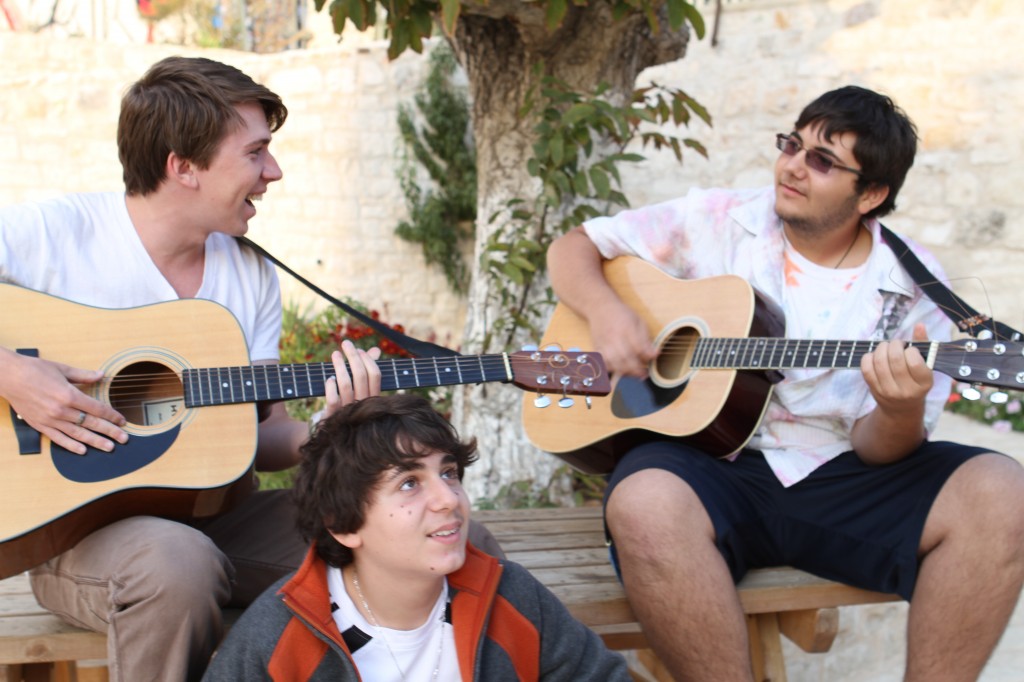
Rafiq and Lucas Zoughbi, joined by their cousin Larry, jam in the Wi’am Garden (Photo by Bob Haynes),

Gerri Haynes, right, and the other members of the WPSR medical team navigate the intricate security system on the Gaza border (Photo by Bob Haynes).
By Gerri Haynes
(Gerri Haynes, a former president of Washington Physicians for Social Responsibility, is sending back reports from inside blockaded Gaza. As she did three times before, Gerri organized a team of doctors and other health care providers to work in hospitals and clinics in Gaza in an effort to directly help the people there and to bring attention to the ongoing humanitarian crisis that the Israeli blockade has created. Seventh in the series.)
Early this morning, we boarded a van for the border between Gaza and Israel. Leaving Gaza is complex. We bid farewell to the great people who helped make our stay possible, then drove north and east to Erez, the only passage between Gaza and Israel for people.
Passing to Israel took about two hours. First, on the Gaza side, two stops are required for passport checks. Then, with baggage on a cart pushed by a Palestinian, there is a long walk (1/3 mile?) through a linear cage to the first step into the Israeli side. There, after a door denying return to the Gaza side closes, a camera surveys people and bags and a disembodied voice provides direction to move through two sets of doors or turnstiles to the next section of the crossing.
With many more bags than people, we gradually moved up a long, wide corridor to another set of doors and turnstiles. Slowly, we fed our baggage through a turnstile and encountered a human being. This gentleman directed us to place all of our electronic gear into one large flat plastic bin. Then we waited for about one hour as Palestinian patients and businessmen filtered around us and through the next set of doors.
When our turn came, our gear and opened suitcases were placed on a conveyor belt and moved up and out of site. We then passed through another set of doors, approached a full-body scanner, waited in line for each persons turn to be scanned, completed the scan, entered an area of small individual cubicle and waited while our scans were analyzed by personnel visible on the building’s second floor. When we were released from the cubicles, we entered a room where plastic bins were moving slowly around on an elevated a square of rollers. We retrieved our electronic gear and moved through another door to the luggage inspection stands. Here, gloved human beings were going through each piece of luggage – the contents scrambled and then returned to us to be re-packed.
Finally, we passed through passport control and moved away from the building, across roads, down a sidewalk, through another turnstile and down a set of stairs to a parking lot where the driver of a van waited to take us to Bethlehem.
I recount this long process to demonstrate that each person leaving Gaza does so with difficulty. Joining us in this passage were sick children and heart-broken adults. Palestinians leaving Gaza must go through an arduous vetting process before passage is even a possibility and a mother (young fathers are seldom allowed to pass) completing this arduous journey with a sick child faces daunting obstacles.
The land between Erez and up to Bethlehem is beautiful. The political landscape is visible in the development and population of the land, but the land itself is lovely. In the afternoon, we drove the long, dangerous road through the Valley of Fire to Ramallah. Without special permission, Palestinians are not allowed to drive the direct (shorter, faster, safer) route to Ramallah through Jerusalem.
In Ramallah, we were treated to an inspiring visit with Dr. Mustafa Barghouthi, head of the Palestine Medical Relief Committee. Dr. Barghouthi reviewed service provided by PMRC in Ramallah, Nablus and Gaza and invited us to join them in their work during our next visit. As Director General of the Palestine National Initiative, a party dedicated to non-violence and secular democracy, he spoke of his hopes for resolution of the current deadlock in the peace process between Palestine and Israel – emphasizing the need for non-violent strategies to express the needs of the Palestinian people.Returning to Bethlehem, we enjoyed a wonderful dinner, prepared by the sister-in-law of our friend, Zoughbi Zoughbi. Zoughbi is the tireless director of Wi’am, the Palestinian Conflict Resolution Center. He and two of his sons, Lucas and Rafiq, accompanied us to Ramallah. It was late when we bid farewell to our hosts and their other guests. Zoughbi parted from us, saying that he was needed to facilitate the resolution of another conflict in Bethlehem. His days are always long.
Tomorrow, we will tour East Jerusalem, gather more data on water in preparation for a presentation by members of our group to the American Public Health Association meeting in Washington DC, and then return to Tel Aviv for our flights from this land.
By Gerri Haynes
(Gerri Haynes, a former president of Washington Physicians for Social Responsibility, is sending back reports from inside blockaded Gaza. As she did three times before, Gerri organized a team of doctors and other health care providers to work in hospitals and clinics in Gaza in an effort to directly help the people there and to bring attention to the ongoing humanitarian crisis that the Israeli blockade has created. Sixth in the series.)
This evening, our group was hosted in the lovely garden of Dr. Eyad Sarraj, president of the Gaza Community Mental Health Programme. Dr. Sarraj is respected throughout the world for his work on peace and reconciliation and for his study of refugees and the trauma of war and occupation. His giant spirit has inspired members of WPSR to return again and again to Gaza and to provide information about the situation in Gaza to our medical and nursing colleagues.
As we complete this brief journey, members of our team are preparing to give two presentations on Gaza at the American Public Health Association meeting in Washington DC next weekend. We have had hospital and clinic experiences and listened with open hearts. We hope to return next year with an expanded medical team, prepared to offer services not presently available here.
Today, Kara Mochan and Maxine Fookson gave lectures at Islamic University. Kara sends these notes on her time here:“These days have been a whirlwind of activity:
• Meetings with the Palestinian Nursing Association to talk about the state of nursing in Gaza and the need for continued nursing education for the 7,000 nurses in Gaza
• Meetings with the only certified child psychiatrist in all of Gaza, my wonderful colleague Dr. Sami… One meeting with Dr. Sami included a tour of the child therapy room – fully equipped and ready for use.
• A tour and meeting with the director of the Qattan Center, a private organization, serving the children of Gaza City with a resource center and full library for children and parents”
• And many more…
Kara has been busy in Gaza. She has taught and learned and consulted with colleagues throughout Gaza. The list is long and full. In many meetings, she has been invited to return to teach, conduct research, and consult.
Kara writes, “I have slept little. Today, as the light starts to wake up Gaza, I look out to the sea to take in the calming waves and this time I only see one Israeli boat watching me as I write this………. maybe that is why I was sleepless in Gaza tonight.”
This morning, Laura Hart and I met with Sébastien Trives of UNRWA. He is completing five years in Gaza and reviewed the extensive work UNRWA does in Gaza. Sébastien expressed great concern over Gaza’s status as a welfare state with a shadow economy (the tunnels). He questioned the sustainability of the present situation and noted that due to deep cuts in the budget of UNRWA, employment levels of local people will fall.http://www.guardian.co.uk/world/2011/jun/14/un-unrwa-report-blockade-gaza-unemployment
Laura Hart, M.D. writes: As the sun set tonight in Gaza, our last evening here, I thought of how privileged we are to travel to this remarkable place. I was struck again by the grace and courage of the people of Gaza. Whether it is a mother worried about her child, a doctor or nurse thirsting for the most current treatment protocols and techniques, or the hotel clerk who wants only to work in the field of his educational degree, I am humbled. I am so grateful for the hospitality of Dr. Eyad Sarraj, Gaza Community Mental Health Programme and the physicians and personnel of the hospitals and clinics who welcomed us.
A special note of thanks goes to Amani, Ashraf and Abu Husam of the Gaza Community Mental Health Programme for arranging meetings, teaching opportunities, transportation and hundreds of details to make this journey successful – we are blessed.
By Gerri Haynes
(Gerri Haynes, a former president of Washington Physicians for Social Responsibility, is sending back reports from inside blockaded Gaza. As she did three times before, Gerri organized a team of doctors and other health care providers to work in hospitals and clinics in Gaza in an effort to directly help the people there and to bring attention to the ongoing humanitarian crisis that the Israeli blockade has created. Fifth in the series.)
This morning, I sat with a group of women whose family members have died. A dear friend in Washington state is interested in writing the stories of women in Gaza and I wondered if it would be possible to find women who might be willing to tell of their experience.
In brief, waiting for the fuller expression of their stories, these are the words I heard today:
Reem: My brother was killed in the Fakhoura massacre during the Cast Lead operation of 2008/2009. He had four children and after he was killed, his widow took the children to another part of Gaza and we no longer see them. We lost my brother and his whole family.
Amal: My child was five years old during Cast Lead. He was burned by white phosphorus and one year later, he died of cancer. There are many cases like this – children who were exposed to white phosphorus and who have now died of cancer. One day on the street, I heard other children calling a child by the name of my son – I began to cry, calling out his name again and again, “Hamza, Hamza, Hamza.”
Nahala: My husband and three of my children (two boys and one girl) were killed in the Fakhoura massacre. My daughter-in-law was also injured. Now I live with four sons and two daughters. One of my sons lost his legs – one above the knee and the other below the knee. Doctors have tried to help. He had artificial legs, but they didn’t fit and made him sore. Now he gets around in a wheel chair (note: there are very few handicapped-access places in Gaza) and needs more care. So much has happened. I find that I am very forgetful.
Amina: My son died in the massacre. He was 29 years old and had two boys and one girl. His wife married my son’s brother – our custom so that she will be cared for. Three of my children were injured. One of my sons has a neurological problem and a large hole in his leg. He needs care that isn’t available here. A doctor from another country came here and tried to help, but the problems of my son are now worse. Please see if you can help him.Asma: My husband died during the civil war in Gaza. We have one son who was one-year-old when my husband died. He is six now and has trouble with speech and he is hyperactive. I don’t know how to help him.
Khifa: My husband was 37 years old in 2006. He was standing in front of our house. Someone fired rockets into Israel and Israel fired back – my husband was killed. My two daughters are married and live with their husbands. My son is 16 and we live in a room in my father’s house. Soon, I will have to leave this house and I don’t know where we will go. I am physically and psychologically tired. My son is also very tired. We don’t know what will happen to us.
Eman: Two of my sons and my brother-in-law died in the massacre. At 3 AM, the Israelis called and told us to evacuate our home. When we were leaving the house the next day, we were attacked. Now my husband and I live with our four young children. One of my sons who was killed was older – he had been married for twenty days. I’m OK, but this is hard. My children have a hard time – they witnessed the killing. My husband doesn’t express his grief, but when he sees the children of my one son, he does cry. In one family I know, eleven people were killed.
Linda: My husband and fourteen-year-old son died in the massacre. I lost my home and now live in the home of my brother-in-law with my son and daughter – my brother-in-law lives abroad.
Nihad: Two of my sons died. I saw one of them die. I stay in my house with my family. My daughter-in-law lives with me.
The recent prisoner swap brought many feelings to these women. Together they told me that when they saw the released prisoners they were happy for the families, but wanted the same thing for those who died. As these women told their stories, a social worker from the agency where we met, listened and at the end of our time together, she spoke of having them meet together again to try to do some healing work.
By Gerri Haynes
(Gerri Haynes, a former president of Washington Physicians for Social Responsibility, is sending back reports from inside blockaded Gaza. As she did three times before, Gerri organized a team of doctors and other health care providers to work in hospitals and clinics in Gaza in an effort to directly help the people there and to bring attention to the ongoing humanitarian crisis that the Israeli blockade has created. Fourth in the series.)
While medicines and medical equipment are not technically prohibited for importation to Gaza, the reality here is that medicines and equipment are difficult to obtain:
1. There is only one crossing between Israel and Gaza that allows passage of goods and this crossing is open for a limited number of hours/day.
2. Transport of materials is onerous – goods brought to the crossing must pass through a secure set of doors, one door closing before another opens, with all doors to Israel fully secured before Palestinians can open doors on the Gaza side. UN personnel refer to this as materials passing through “sterilized zones” – high security clearance is required for each person who touches the goods and only UN personnel may make contact with the goods.
3. No goods are transported between Israel and Gaza on trucks. Materials are off-loaded from Israel and then must be palletized prior to entering Gaza to be re-loaded on trucks. The result is a minimal amount of material can be received – the delivery time is short and the process is long.
4. Requests for materials must be cleared by Israel and this can take weeks/months
5. The economy of Gaza is markedly depressed. UNRWA announced today that the unemployment rate is 45%. Funds to purchase materials are extremely limited.
Bob Haynes, cardiologist, is consulting and providing direct care for cardiology patients in several clinics. He is doing most of his work in the evenings and is seeing patients of all ages, including one 10-month-old child! The expertise of cardiologists in Gaza is high, but association with international colleagues is rare and one physician commented to Bob today, “It’s just nice to know that we haven’t been forgotten.”
Maxine Fookson, pediatric nurse practitioner, writes:“Since this is my first trip to Gaza, I find my eyes and heart wide open. I could use many more days or weeks here to see all that I want to see. I am shocked at the abject poverty and suffering from the siege on all of Gaza’s borders (air, land and water). And yet, I am so totally impressed with the talent, ingenuity, warmth, humor and total determination of the Gaza people. At an amazing technology fair we visited today showcasing students’ projects and designs at the Islamic University, as we were in awe at an optical invention that a student invented to correct childhood amblyopia (poor vision), the Dean of Nursing exclaimed, ‘See, that’s Gaza under siege!’ He is so right! What would Gaza be if it were free?
“I have visited a few health care sites providing maternal child health care. The first was a hospital and clinic called Al Awdah, which is funded by NGOs. The first impression is that the actual environment, including their instruments, looks to be about 30-40 years behind that which we have in the U.S. However, the environment was spotless. The pediatrician who showed me around explained that due to the difficulties in global economics, their funds are greatly reduced. As a result their intensive care units are closed completely. They have had to cut staff by about 30% and their pharmacy is almost bare of many essential drugs.
“I also visited the UNRWA Clinic in Nuserat, in the Central Gaza Strip. I was greeted with such warmth and hospitality. Again, I heard about the incredible manpower shortage. Nurses working in pairs see 60 to 70 well child visits in a day. The doctors average over 120 patients per day. Despite the shortages, they have a specialized clinic for children having school difficulties consisting of a pediatrician, a mental health provider and a nurse. It has been so rewarding to talk to these medical practitioners as colleagues. I am so totally impressed with the quality of the care they deliver under such incredible stress and conditions of scarcity.
“Other highlights for us have included visiting the fabulous programs of Qattan Centre and an UNRWA school located in converted shipping containers. It is estimated that UNRWA needs to build 100 schools to provide education for all the refugee children at this time, but they have funds to complete only 7 of the schools. Again, the structure of the school was so depressing, but the passion and dedication of the principal and teachers is amazing.”
The UNRWA container school is a facility of 15 boxes without air conditioning. We met representatives of a dedicated parent committee and were impressed with the passion of faculty and parents in assuring that the high priority on Palestinian education is respected. Set in a bare sandy lot, this facility will be replaced by a new school as soon as Israeli authorities allow the necessary building materials to enter Gaza.
By Mark Trahant
Mark Trahant is a writer, speaker and Twitter poet. He is a member of the Shoshone-Bannock Tribes and lives in Fort Hall, Idaho. Trahant’s recent book, “The Last Great Battle of the Indian Wars,” is the story of Sen. Henry Jackson and Forrest Gerard, now available at www.lastgreatbattle.com Follow him on Twitter @trahantreports and daily “news” poems @newsrimes4lines
While Republicans pretend they can instantly repeal the complicated law, the actual implementation continues to moves forward. Sort of.
One provision that is not going to happen is the long-term care program known as CLASS (Community Living Assistance Services and Supports). This program was the brainchild of the late Sen. Edward M. Kennedy, D-Mass.
Health and Human Services Secretary Kathleen Sebelius announced on October 14 that she did not see a “viable path forward” for CLASS. “… the law passed by Congress required me to design a plan that would be actuarially sound and financially solvent for at least 75 years,” Sebelius said. “The provision protected both taxpayers and beneficiaries. After all, if CLASS failed, no one would be hurt more than those who would pay into it and would be counting on it the most.”
The problem is, of course, demographic. The baby boom generation is huge, much larger than the generation of workers and taxpayers that must pay for such a program.
But, as Sebelius pointed out in her news release, the problem is not going away. “By 2020,” she said, “we know that an estimated 15 million Americans will need some kind of long-term care and fewer than three percent have a long-term care policy.”
Long-term care is a complicated issue for Indian Country. There are only a little more than a dozen nursing homes serving American Indians or Alaska Natives. There are also several initiatives promoting care for tribal members either in their homes or in facilities. Unlike the CLASS program, many argue that because of Medicaid funding, there is a “business model” for long-term care in Indian Country. Medicaid is an entitlement program, so if people are eligible, the money is there. At least for now.
The other big “sort of” for health care reform is money. Most of the Indian health system does not have an adequate funding stream. Even with the enactment of the Affordable Care Act, the system remains seriously underfunded. The current congressional budgeting process through a Continuing Resolution (a short-term spending bill) only makes that problem worse.
One measure of that problem is the money appropriated for Contract Health Services. Nearly anyone who’s ever used the Indian Health Service (or a contracted, tribal program) understands the shortage of money for contract services (those outside of IHS).
A study last month by the U.S. General Accountability Office put this in perspective: “Sixty of the 66 federal and 73 of the 103 tribal CHS programs that responded to GAO’s survey reported that in fiscal year 2009 they did not have CHS funds available to pay for all services for which patients otherwise met requirements.”
Moreover 11 of 60 CHS programs reported running out of money before the end of fiscal year (the source of the “don’t get sick after June” narrative).
Some health facilities told the GAO that they found a way to pay after the money ran out. “For example,” the GAO said, “some federal CHS programs reported helping patients locate free or low-cost health care. Tribal CHS programs reported using a variety of strategies not available to federal CHS programs. For example, 46 of 103 tribal CHS programs that responded to GAO’s survey reported supplementing their CHS programs’ funding with tribal funds, which are earned from tribal businesses or enterprises.”
So what does GAO think IHS should do about this? Get better data to more accurately reflect the needs of Indian people. I can’t argue with that, but the government investigators also ought to tell Congress to do its damn job and appropriate enough money.
But there is a bigger issue here. Namely: What is the business model for the Indian Health Service and the Indian health system?
The IHS is a federal agency that directly operates clinics and hospitals; the Indian health system is broader, using money from IHS (and other sources) to fund tribal and other health providers. In some ways that means IHS, the funder, almost has to act like an insurance company instead acting like a government agency.
It’s that diffusion of mission — IHS as funder, operator and insurance company — that makes it far more complicated to be clear about the meaning of health care reform to American Indians and Alaska Natives. Especially when the health care reform law and the funding for the Indian health system remain on separate (and unequal) tracks.
